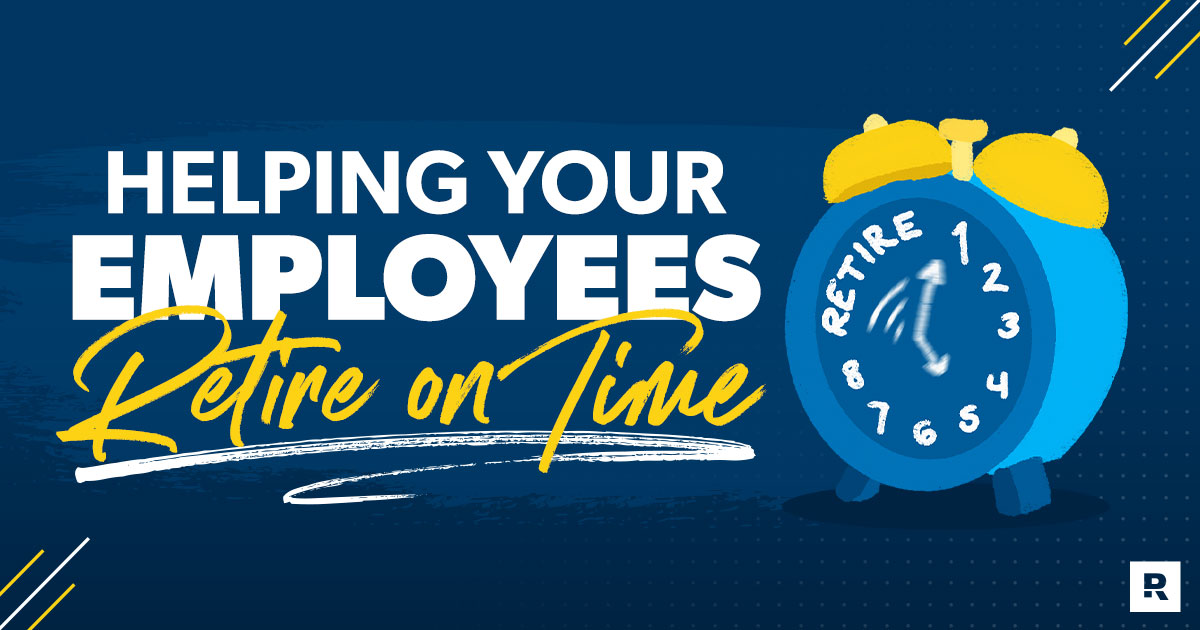New data from the US Bureau of Labor Statistics (BLS) matches what you’ve likely observed in your own business: Many workers are working well beyond the traditional retirement age.
Some may be doing so out of sheer love of their work, and if so that’s great for them and your organization. But in many cases it’s because they can’t afford to retire. A 2015 Government Accountability Office study included a shocking stat—nearly three in 10 Americans aged 55 and older don’t have any form of retirement nest egg saved.1
The late fifties are usually years in which workers are winding their careers down, but with zero financial cushion, this group can’t even consider retiring anytime soon. And even when you include those 55 and over who have started saving, the picture doesn’t get much rosier. Average balances are far too low to make retirement feasible:
- Those aged 55–64 have saved a median of $104,000, which amounts to just over $300 a month to live on in retirement.
- The 65–74 age bracket median balances are a bit higher, but accounts still hit only $148,000. That works out to $649 a month.
With so many workers approaching 65 with little or no savings, it’s not surprising to find that the share of older workers is rising too. The BLS reported in 2019 that 40% of Americans 55 or older were employed or looking for work.2 But looking at workers aged 65 and older clearly demonstrates the increase in delayed retirement: BLS anticipates that participation rate of workers age 65–74 will rise to 30.2% by 2026.3
The Impact of Delaying Retirement
The basic problem with putting off retirement indefinitely is how unrealistic it is—everyone retires eventually. The real tragedy happens when workers who have no endgame plan are suddenly forced to stop working by unexpected life events like illness or the need to care for an elderly parent.
As an employer, you hate to see your workers end up in those kinds of involuntary unemployment. So long as an employee lacks a sense of financial wellness, they will be suffering both at home and on the job. The purpose of helping employees retire at a certain stage is to help them complete their careers with dignity and in a way that’s mutually satisfying both for you and for them!
Here are a few strategies that could help you help them choose to retire on their own terms:
Job Share Program: This approach to staffing lets you assign more than one worker to a job and allows each of them to work a flexible, part-time schedule. It’s one way your company could begin to reduce hours for older workers who might want to retire gradually without abruptly stopping work altogether.
Phased-Out Schedule: The name says it all. This is a way for older workers who might not be either financially or emotionally prepared to retire to ease into retirement. Forbes.com reports companies typically offer such programs to employees above 55 years of age, and often limits them to employees who have achieved a certain tenure of service with the organization.4 The timetable for a phased out retirement plan varies widely, but schedules typically range from six months to five years.
Mentorship Program: With decades of experience behind them, your older employees have vital knowledge that they can share with your team before retiring. Through a mentorship program, you have an opportunity to benefit both younger and older workers. As older workers begin to phase out of some work duties, they can take on a more formal mentoring relationship with younger coworkers.
Click here for free, SHRM-accredited webinar content on all things HR and business leadership.
Extended Sabbaticals: If the prospect of retiring forever is troubling to some employees, an extended sabbatical could be a win-win for both them and their employers. By taking an extended time away from the job, they’ll be refreshed by the possibility of resuming work with more energy later. A sabbatical could also give them a taste of retirement life and a chance to find their footing. The break could make them less anxious about retirement. What’s more, it could mean savings for your organization in the meantime.
How Financial Wellness Gets Employees Ready for Retirement
To be proactive in helping employees retire on time, the most impactful thing you can do is to make sure they have access not just to a 401(k), but to a solid financial wellness program at work. Help them avoid the all-too-common late-career retirement anxiety with a program that emphasizes
- Basic budgeting skills
- Debt elimination
- Emergency funding
- Investing for retirement early and often
The right content and coaching around personal finance will help them navigate the financial waters and be prepared for retirement when the time comes. That kind of investment in your team now could mean a huge payoff in your workforce years from now.
Related: How are your employees doing getting ready for retirement? Click here to get a full assessment of your company's retirement plan health.


